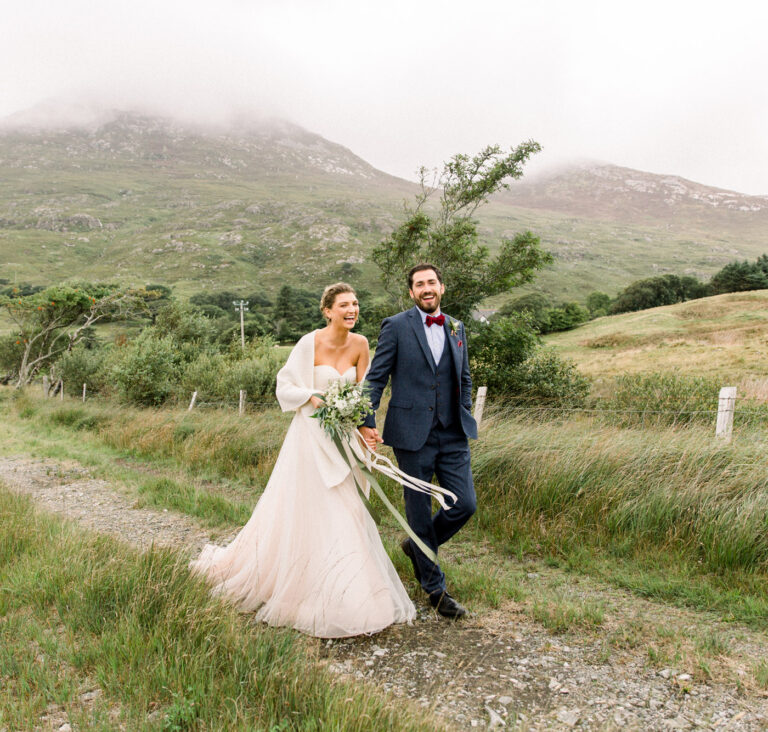Where Is Sugarloaf Mountain? Exploring Two Iconic Hiking Destinations
The question Where is Sugarloaf Mountain? is not as simple as it seems. Two majestic peaks, one in California and one in New York, share this name, each attracting hikers with its distinct beauty and challenges. From the towering heights of the Big Bear Valley to the demanding Devil’s Path in the Catskills, both Sugarloaf Mountains offer a chance to escape the ordinary and immerse yourself in the great outdoors.
Where is Sugarloaf Mountain, California: Conquering the Big Bear Valley
Nestled in the picturesque Big Bear Valley of California, Sugarloaf Mountain rises to an impressive 9,952 feet. This majestic peak offers not only breathtaking views but also a variety of hiking experiences for outdoor enthusiasts. The Sugarloaf Mountain Trail is well-known for its moderate to challenging terrain, making it a favorite among both novice and seasoned hikers alike.
Location and Accessibility
Sugarloaf Mountain is located in San Bernardino County, approximately 10 miles northeast of the town of Big Bear Lake. The area is easily accessible via several highways, making it a popular destination for day hikers and weekend adventurers. As you navigate the winding roads leading to the trailhead, you’ll be greeted by stunning views of the surrounding mountains and forests, setting the stage for an unforgettable hiking experience.

The Big Bear Valley has experienced a surge in popularity in recent years, attracting outdoor enthusiasts seeking a respite from urban life. This increased interest has led to greater awareness and usage of the Sugarloaf Mountain Trail, making it a popular destination for both day hikers and weekend adventurers.
Trail Overview
The Sugarloaf Mountain Trail spans approximately 4.5 miles round-trip, with an elevation gain of about 1,788 feet from the parking lot to the summit. The trail features a rocky terrain and a consistent uphill climb, providing a solid workout for those who take on the challenge. The hike is generally considered moderate to difficult, depending on your fitness level and hiking experience.

The Sugarloaf Mountain Trail in Big Bear Valley boasts a rich history. The area was inhabited by the Serrano people for centuries, and the trail likely served as a traditional route for hunting and gathering. In the early 20th century, the area was developed as a popular summer resort destination, and the trail became a favored spot for hikers and nature enthusiasts.
As you embark on your journey, be prepared for a diverse landscape that includes old-growth forests, rocky outcrops, and small stream crossings. The trail is well-marked, but some sections may require extra caution, especially during wet or snowy conditions.
Scenic Highlights
One of the most captivating aspects of hiking Sugarloaf Mountain is the opportunity to immerse yourself in nature. The trail winds through lush forests filled with towering pine trees, providing ample shade and a serene atmosphere. Keep an eye out for the diverse wildlife that calls this area home; you may spot birds, deer, and even the occasional porcupine along the way.

The ascent rewards hikers with breathtaking panoramas, where each step reveals a new vista of the San Bernardino high peaks, leaving you awestruck by the grandeur of the natural landscape. While the summit itself does not have a designated viewpoint, the journey to the top offers stunning vistas that will leave a lasting impression.
Trailhead Access
To reach the Sugarloaf Mountain Trailhead, follow these directions: From the main highway (Route 38), turn onto Forest Service Road 2N93, also known as Wildhorse Meadow Road. The trailhead parking area is located about a mile up this dirt road. Keep in mind that the dirt road can be rough on some vehicles, so it’s best to park at the beginning of the Forest Service Road and walk the rest of the way to the trailhead. Be sure to pull off to the side of the road to avoid blocking other traffic.

Best Time to Visit
When planning your visit to Sugarloaf Mountain, consider the seasonal variations in weather. The summer months (June to September) typically offer the most consistent and pleasant hiking conditions, with average temperatures ranging from the 70s to the 80s Fahrenheit. This is an ideal time for hiking, as the trails are generally clear of snow and wildflowers bloom in abundance. However, be prepared for the possibility of afternoon thunderstorms during the summer months.
While the summer months offer ideal hiking conditions, they can also attract large crowds, leading to potential congestion on the trail. If you prefer a less crowded experience, consider visiting during the shoulder seasons or weekdays.
Sugarloaf Mountain, New York: Tackling the Catskill Challenge
Across the country, the Sugarloaf Mountain located in the Catskill Mountains of New York offers a different, yet equally captivating, hiking experience. Towering at 3,810 feet, this peak is renowned for its challenging trails and stunning views. The Sugarloaf Mountain Loop is part of the famous Devil’s Path, one of the most difficult and dangerous hiking trails in the world.
Location and Accessibility
Sugarloaf Mountain is situated in Greene County, New York, about 25 miles southwest of the city of Albany. The Catskill Mountains are a popular destination for outdoor enthusiasts, attracting hikers, climbers, and nature lovers from all over. The area is easily accessible via major highways, making it a convenient getaway for both day trips and extended adventures.
Trail Overview
The Sugarloaf Mountain Loop is approximately 6.5 miles long and features an elevation gain of about 1,500 feet. This trail is considered very difficult, with steep and challenging terrain throughout. It is best suited for experienced hikers who are comfortable navigating rocky paths and steep inclines.
While the Sugarloaf Mountain Loop is considered very difficult, it’s important to note that the trail can be challenging even for experienced hikers. It’s crucial to assess your fitness level and hiking experience before attempting this trail, as it requires a high level of physical and mental preparedness.
As you begin your ascent, you’ll encounter a steep and rocky climb that tests your endurance and skills. The trail winds through the historic Dibble’s Quarry, where you can take a moment to enjoy the stunning views of the Platte Clove Valley.
Trail Features
The Sugarloaf Mountain Loop showcases a fascinating geological history. The trail traverses through the Shawangunk Mountains, a unique geological formation known for its distinctive Shawangunk Conglomerate rock. This rock, formed from ancient riverbeds, creates the challenging and rugged terrain that defines the Devil’s Path and the Sugarloaf Mountain Loop.
One of the highlights of the Sugarloaf Mountain Loop is its unique geological features. The trail takes you through Pecoy Notch, a challenging section that requires careful navigation. Here, hikers must maneuver around steep cliffs and rocky outcrops, making this portion of the hike particularly exhilarating.
The true test comes on the western side of Sugarloaf Mountain, where the Devil’s Path presents a daunting challenge. This section is known for its steep climbs and dangerous cliffs, testing the limits of even the most seasoned hiker. However, the effort is well worth it, as the breathtaking vistas and sense of accomplishment await you at the summit.
Summit Views
Upon reaching the summit of Sugarloaf Mountain, hikers are rewarded with sweeping panoramic views of the surrounding Catskill Mountains. The sight of rolling hills, dense forests, and distant peaks creates a stunning backdrop that makes the climb worthwhile. Be sure to bring your camera to capture the beauty of this unforgettable experience.
Trailhead Access
To access the Sugarloaf Mountain Loop, take the New York State Thruway to Exit 21 (Catskill). Turn left out of the entrance road and continue for approximately 3/4 mile before turning right onto Route 23 West. After about 6.6 miles, turn left onto Route 32, then left onto South Main Street in Tannersville. Follow South Main Street for around 4.3 miles until you reach Dale Lane. Turn right onto Dale Lane, then right again onto Roaring Kill Road, which will lead you to the DEC parking lot.
Please note that parts of Roaring Kill Road may not be plowed in winter months, so be sure to check conditions before your hike.
Best Time to Visit
The best time to hike Sugarloaf Mountain in the Catskills is typically from late spring to early fall. Summer months provide the most reliable weather, making them an ideal choice for hiking. However, the winter months can also be magical, offering opportunities for snowshoeing or cross-country skiing on the Sugarloaf Mountain Loop. Just be prepared for colder temperatures and potentially icy conditions.
In recent years, there has been a growing emphasis on trail safety and conservation in the Catskill Mountains. The Catskill Park, managed by the New York State Department of Environmental Conservation (DEC), has implemented several initiatives to promote responsible hiking and protect the natural environment. These include trail maintenance, education campaigns, and partnerships with local organizations.
Hiking Safety and Preparation
Whether you’re tackling Sugarloaf Mountain in California or New York, proper preparation and safety considerations are essential for a successful hike.
Weather and Trail Conditions
Always check the weather forecast and trail conditions before embarking on your journey. Sudden changes in weather can impact trail conditions and your hiking experience. It’s advisable to consult local resources or hiking forums for the latest updates.
Essential Gear
Bring the necessary gear for both mountains, including sturdy hiking boots, a layered clothing system, plenty of water, and nutritious snacks. A good hiking backpack will help you carry your essentials comfortably. Don’t forget a first aid kit, a headlamp or flashlight, and a whistle for emergencies.
Navigation
Familiarize yourself with the trail maps and navigation tools, as some sections of the Sugarloaf Mountain hikes can be challenging to follow. Carry a map, compass, and/or GPS device to ensure you stay on the right path. It’s also a good idea to have a backup power source for your devices in case of emergencies.
Leave No Trace
Respect the natural environment and follow Leave No Trace principles to minimize your impact. Stay on marked trails, pack out all trash, and avoid disturbing wildlife. By being a responsible hiker, you help preserve the beauty of these iconic landscapes for future generations.
Conclusion
Whether you’re drawn to the majestic Big Bear Valley or the rugged Catskill Mountains, Sugarloaf Mountain offers a unique and unforgettable hiking experience for outdoor enthusiasts. From the lush, old-growth forests of California to the challenging Devil’s Path in New York, these scenic peaks promise breathtaking landscapes, a true test of your hiking skills, and the opportunity to immerse yourself in the beauty of the great outdoors.
As you plan your adventure to Sugarloaf Mountain, remember to prioritize safety, prepare thoroughly, and embrace the journey. The rewards of conquering these trails will stay with you long after you’ve returned home, inspiring you to explore more of the great outdoors. Whether you’re hiking solo or with friends, each step on these iconic trails brings you closer to nature and the thrill of adventure.






